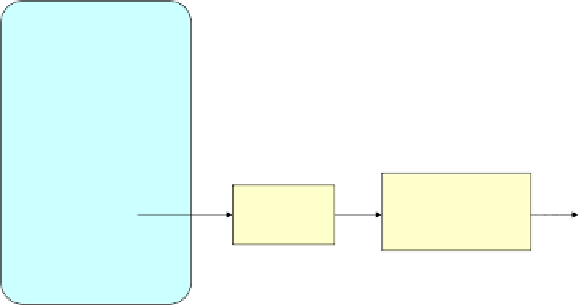Information Technology Reference
In-Depth Information
On the other hand, CABAC converts symbols (coding mode, motion vector,
transform coefficients, etc.) into a binary code series based on the rule defined by
the standard (binarization), then chooses an occurrence stochastic model based on
a context model (context modeling) and finally performs a binary arithmetic cod-
ing based on the selected occurrence stochastic model (binary arithmetic coding).
In addition, an occurrence stochastic model is updated based on the result of cod-
ing (probability estimation).
Set of Conditional Occurrence
Probabilities of {0,1}
CABAC
process
INPUTS
P
0
Update P
n
with coded
bin value
SE values of
neighboring
Blocks
(S
A
, S
B
)
S
B
P
n
Decision of
Probability ID
n
S
A
S
X
P
N-1
Position of bin
to be coded
P
n
Block where S
X
is assigned
OUTPUT
Arithmetic
Coding of
each bin value
SE
Æ
bin string
Coded
bitstring
S
X
S
x
:
Syntax Element (SE)
(mb_type, motion vector,
transform coefficients etc.)
0,1,0,0,1,1,0,...
CABAC encodes binarized syntax elements through selecting probability models for each
syntax element according to element's context, adapting probability estimates based on
local statistics and using arithmetic coding.
Fig. 40
CABAC











